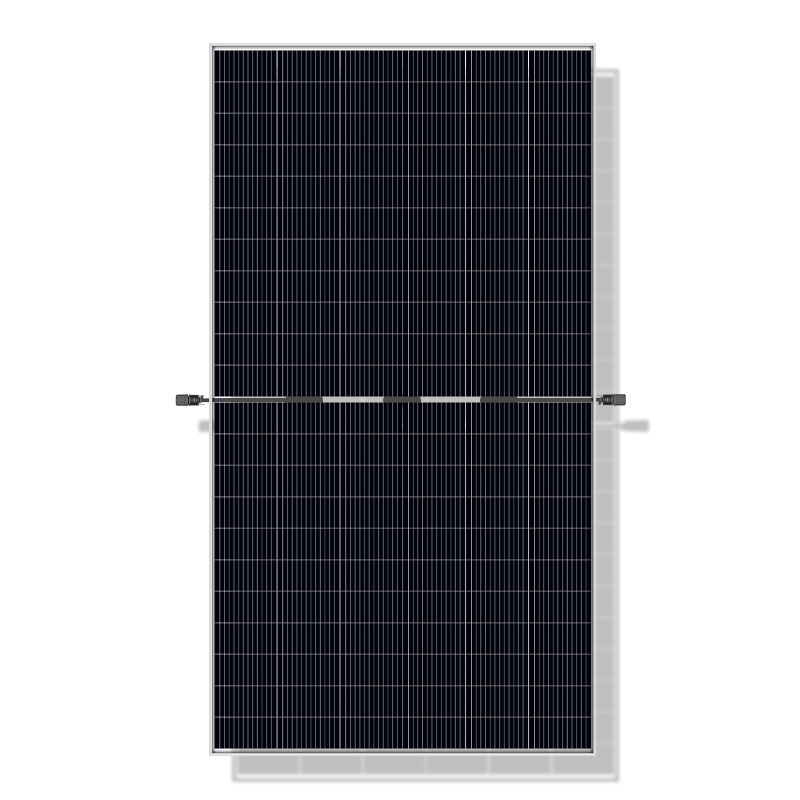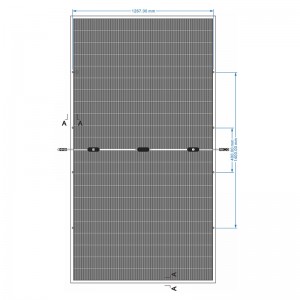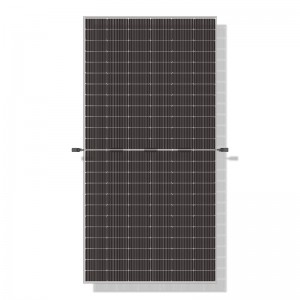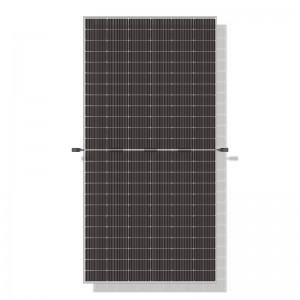G12 MBB ,N-Type TopCon 132 half cells 670W-700W bifacial solar module
Ultra-high Power Generation/Ultra-high Efficiency
Higher Bifacial Gain
Enhanced Reliability
Lower LID / LETID
High Compatibility
Optimized Temperature Coefficient
Lower Operating Temperature
Optimized Degradation
Outstanding Low Light Performance
Exceptional PID Resistance
| Cell | Mono 210*105mm |
| No. of cells | 132(6×22) |
| Rated Maximum Power(Pmax) | 670W-700W |
| Maximum Efficiency | 21.4-22.4% |
| Junction Box | IP68,3 diodes |
| Maximum System Voltage | 1000V/1500V DC |
| Operating Temperature | -40℃~+85℃ |
| Connectors | MC4 |
| Dimension | 2400*1303*35mm |
| No.of one 20GP container | /// |
| No.of one 40HQ container | 558PCS |
12-year warranty for materials and processing;
30-year warranty for extra linear power output.

* Advanced automated production lines and first-class brand raw material suppliers ensure that solar panels are more reliable.
* All series of solar panels have passed TUV, CE, CQC, ISO,UNI9177- Fire Class 1 quality certification.
* Advanced Half-cells, MBB and PERC solar cell technology, higher solar panel efficiency and economic benefits.
* Grade A quality, more favorable price, 30 years longer service life.
Widely used in residential PV system, commercial & industrial PV system, utility-scale PV system, solar energy storage system, solar water pump, home solar system, solar monitoring, solar street lights, etc.
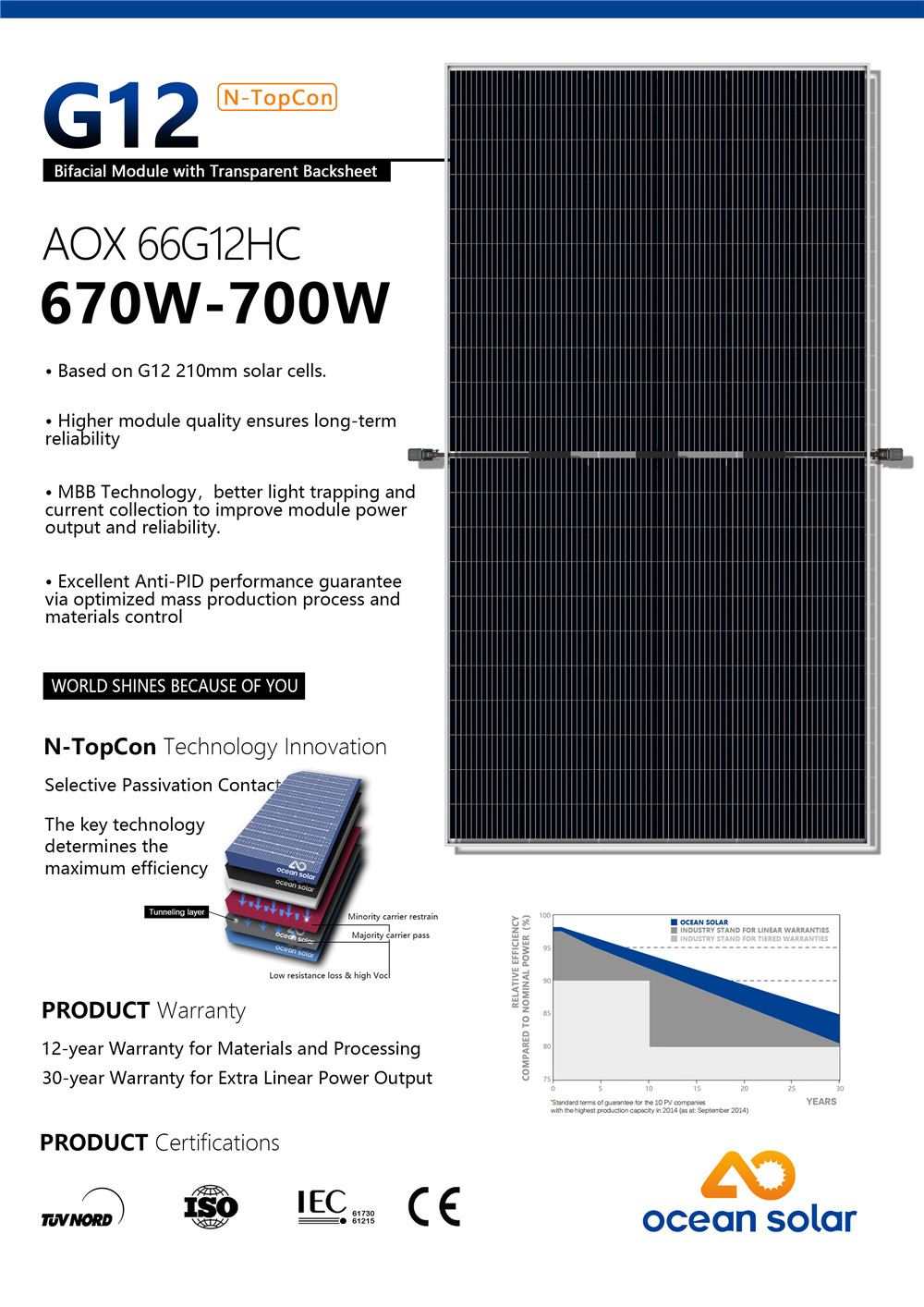
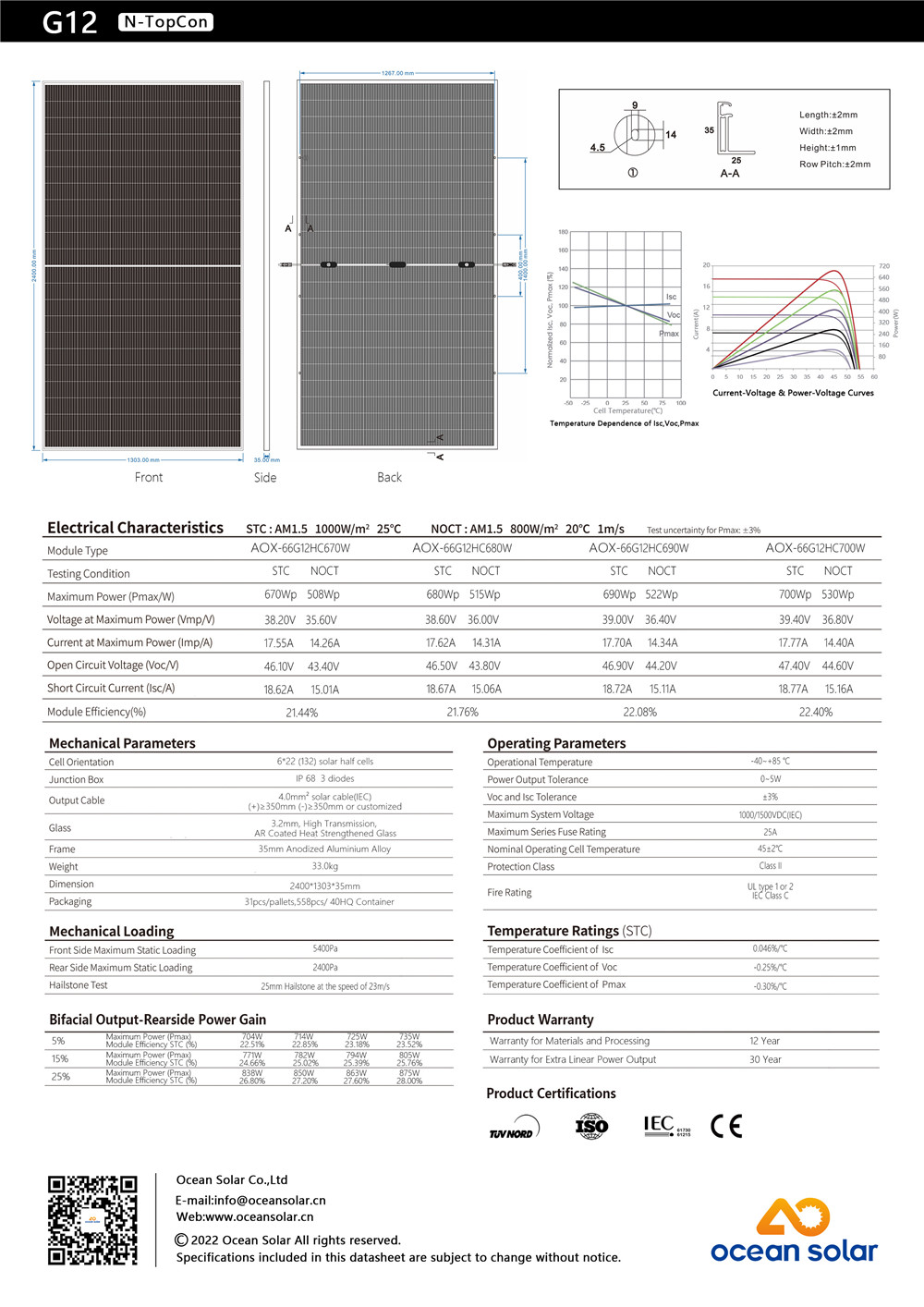
MBB, or Multiple Busbar, is a new approach to solar cell design that has grown in popularity in recent years. The traditional approach to solar cell design involves the use of large metal bus bars to harvest the electricity generated by the solar cell. However, this approach has a number of limitations, including reduced efficiency and increased shading of solar cells.
MBB solar cells, on the other hand, use a large number of smaller busbars distributed across the surface of the solar cell. This approach has many benefits over traditional methods:
1. Improve efficiency: By using a large number of smaller busbars, multi-busbar solar cells can more efficiently collect the electricity generated by the solar cells. This results in higher overall efficiency and more power output.
2. Reduced shadowing: One of the major drawbacks of conventional solar cell design methods is that large metal bus bars cast shadows over a significant portion of the solar cell, reducing its output. MBB solar cells, on the other hand, use smaller busbars distributed across the surface of the cell, reducing shading and increasing total output.
3. Improved durability: Another benefit of MBB solar cells is that they tend to be more durable than traditional solar cells. This is because the smaller bus bars used in MBB batteries are less likely to suffer cracks or other forms of damage than a single large bus bar.
4. Lower resistance: The use of multiple busbars also reduces the resistance inside the battery, which can further improve efficiency and output.
While MBB solar cells are still relatively new, they are already showing promise in laboratory tests and are beginning to be used in commercial applications. In particular, they are well suited for the production of high-efficiency solar cells, which are in increasing demand as the solar market continues to grow.
Overall, MBB solar cells represent an exciting new development in solar cell design, with the potential to significantly increase the efficiency, output, and durability of solar cells. As the technology continues to develop and become more widely adopted, we can expect a significant increase in the use of MBB solar cells in both commercial and residential applications.

